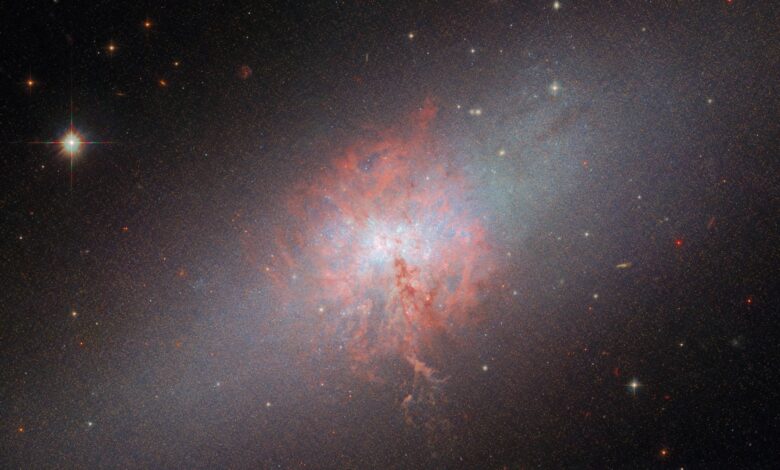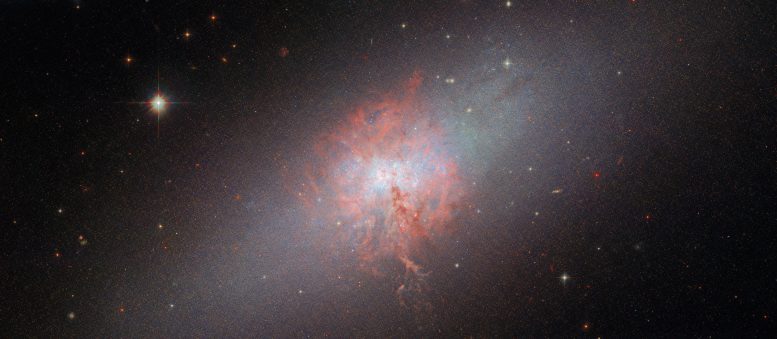Exploring NGC 5253’s Stellar Furnace


This Hubble Space Telescope image showcases NGC 5253, a starburst galaxy actively forming massive star clusters. Located 11 million light-years away, it serves as a critical site for studying stellar processes. Credit: ESA/Hubble & NASA, A. Zezas, D. Calzetti
NGC 5253, a blue compact dwarf galaxy, is highlighted in this week’s Hubble Picture of the Week. About 11 million light-years away, it shows significant star formation, being studied using data from Hubble’s cameras. Its intense starburst activities make it crucial for understanding stellar evolution.
This exquisite image from the Hubble Space Telescope features the blue compact dwarf galaxy NGC 5253. It is located in the constellation Centaurus around 11 million light-years from Earth. This new image combines data taken with Hubble’s Advanced Camera for Surveys (ACS), using its Wide Field Channel, and with the older Wide Field and Planetary Camera 2 (WFPC2). As a bonus this week, there is also a second new image made using data from the High Resolution Channel (HRC) of ACS, a sub-instrument only operational for a few years that was optimized for detailed studies of environments dense with stars.
Exploring NGC 5253 With Hubble
What has interested astronomers so much about this galaxy that three of Hubble’s instruments were used to study it in depth over ten years? It turns out to lie at the focus of a few areas of research where Hubble’s capabilities are essential. Dwarf galaxies are considered important for understanding the evolution of both stars and galaxies through time, since they resemble ancient, distant galaxies. NGC 5253 is called both a “starburst galaxy” and a “blue compact dwarf”: these names mean it is forming clusters of bright, massive stars at an exceptional rate. This Hubble image clearly shows the dense nebula which is being consumed to birth these stars, and which makes NGC 5253 a laboratory to investigate stellar composition, star formation, and star clusters, all at once.
Starburst Phenomenon in NGC 5253
A tremendously high rate of star formation is a recipe for star clusters, but NGC 5253 goes beyond that: in a small region of the core, the star formation is so intense that the galaxy contains no less than three “super star clusters” (SSCs). SSCs are very bright, populous and massive open clusters that are believed to evolve into globular clusters. Globular clusters themselves offer unique insights into how stars form and evolve, but their origins are poorly understood. Astronomers were therefore eager to make use



